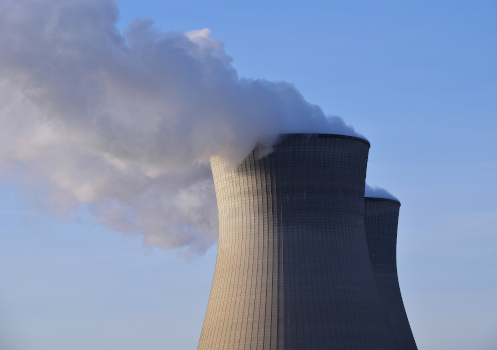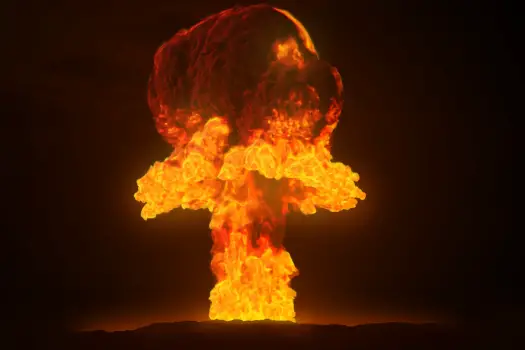Nuclear power is the utilization of nuclear reactions to obtain energy from the atom’s nucleus, specifically through nuclear fission or fusion processes. These reactions release large amounts of energy, which can be harnessed for various applications, primarily electricity generation. The primary method employed in nuclear power plants is nuclear fission, wherein the nuclei of heavy elements such as uranium or plutonium are split, resulting in the production of heat that is then converted into electricity. Nuclear power offers a reliable and low-carbon energy source, effectively meeting global energy demands while mitigating greenhouse gas emissions. Furthermore, it has the potential for diverse applications, such as desalination and hydrogen production.
Nuclear energy is the energy released from the nucleus of an atom through nuclear reactions, such as nuclear fission or fusion. This energy can be harnessed to generate nuclear power, which serves as a significant source of electricity production in many countries worldwide.
Examples
Nuclear power plant

Nuclear power plants use a controlled nuclear reaction, typically involving uranium or plutonium isotopes, to produce heat. This heat is then used to generate steam, which drives turbines connected to generators. The rotation of these turbines generates electricity. The process is known as nuclear fission, where the nucleus of an atom is split, releasing a significant amount of energy.
Space exploration

In space exploration, nuclear energy is harnessed to power generators on spacecraft. Radioisotope thermoelectric generators (RTGs) use the heat generated by the radioactive decay of isotopes, such as plutonium-238, to produce electricity. This reliable and long-lasting power source is crucial for missions that operate in environments where solar power is impractical or unavailable, such as deep space or the dark side of celestial bodies.
Nuclear explosion

Nuclear bombs operate on the principle of nuclear fission or, in the case of more advanced designs, nuclear fusion. In fission bombs, the nucleus of an atom is split, releasing an enormous amount of energy. In fusion bombs, hydrogen nuclei combine, releasing even greater energy. The destructive power of nuclear bombs is a demonstration of the vast amounts of energy released during these nuclear reactions.
Food irradiation

Food irradiation is a process that involves exposing food to ionizing radiation, a form of energy derived from nuclear sources, often using radioactive isotopes. The ionizing radiation disrupts the DNA of microorganisms and insects, reducing their ability to multiply or cause spoilage. This process enhances food safety by reducing the risk of foodborne illnesses and extends the shelf life of certain food products without compromising nutritional value or taste.
Nuclear medicine

Nuclear medicine is a medical field that uses radioactive materials for both diagnostic imaging and therapeutic treatments. In diagnostic applications, small amounts of radioactive tracers are introduced into the body, allowing medical professionals to visualize and assess the functioning of organs and tissues. In therapeutic applications, higher doses of radioactive substances are used to treat specific medical conditions, such as cancer. The radioactive materials used in nuclear medicine procedures are derived from nuclear energy sources and play a crucial role in advancing medical diagnostics and treatments.
More topics
- Electromagnetic radiation
- Nuclear power
- Light
External links
- https://www.nationalgeographic.org/encyclopedia/nuclear-energy/
- https://www.energy.gov/ne/articles/5-incredible-ways-nuclear-powers-our-lives
- https://www.iaea.org/newscenter/news/what-is-nuclear-energy-the-science-of-nuclear-power
- https://examples.yourdictionary.com/nuclear-energy-examples-and-uses.html
- https://study.com/academy/lesson/what-is-nuclear-energy-definition-examples.html
Deep
Learnool.com was founded by Deep Rana, who is a mechanical engineer by profession and a blogger by passion. He has a good conceptual knowledge on different educational topics and he provides the same on this website. He loves to learn something new everyday and believes that the best utilization of free time is developing a new skill.
